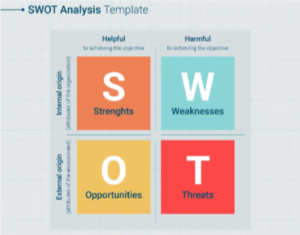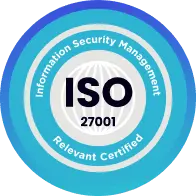When was the last time you delved into the depths of competitive intelligence to fortify your brand’s position in the market? And do you possess the adeptness to execute this process with precision and efficiency?

If you find yourself uncertain or if your most recent “analysis” barely scratched the surface, involving nothing more than a cursory glance at a rival’s website or a fleeting examination of their social media footprint, you might be squandering invaluable insights that could potentially propel your brand to new heights.
So, what exactly is the essence of a competitive market analysis?
At its core, a competitive analysis is a strategic endeavor that entails the meticulous examination of prominent competitors, uncovering their product offerings, sales techniques, and marketing strategies. The fruits of such an endeavor are multifaceted, encompassing the empowerment of more potent business strategies, the ability to fend off competitors, and the acquisition of a more substantial market share.

By embarking on a competitive analysis, you embark on a journey to decipher the inner workings of your competition, unveiling potential opportunities where your brand can outshine them. It serves as the compass guiding you through the ever-evolving terrain of industry trends, assuring that your product consistently not only complies with but surpasses industry benchmarks.
Let’s delve further into the myriad advantages reaped from the pursuit of competitive analyses:
- Distillation of Your Unique Value Proposition: A competitive analysis elucidates what sets your product apart from competitors’, thereby arming your future marketing endeavors with invaluable insights.
- Strategic Reconnaissance: It enables you to discern the winning strategies your competitors employ. This intel is pivotal for maintaining relevance and ensuring that both your product and marketing campaigns soar above industry norms.
- Spotting Weak Links: A keen eye on your rivals’ shortcomings illuminates zones of opportunity in the marketplace. This knowledge empowers you to experiment with innovative marketing strategies that your competitors might not have tapped into.
- Listening to the Customer: Harness the power of customer reviews to unearth the deficiencies in a competitor’s product. Then contemplate how you can integrate features into your own offering to address those needs effectively.
- Setting the Growth Bar: Competitive analysis furnishes you with a benchmark against which you can measure your progress and growth.
Now, what about competitive market research?
This form of research zeroes in on the discovery and comparison of pivotal market metrics. These metrics act as the signposts guiding you through the maze, illuminating the disparities between your products/services and those of your adversaries.
Comprehensive market research lays the groundwork for a potent sales and marketing strategy, one that propels your company into the spotlight, setting it apart from the masses.
In the realm of marketing, every brand stands to gain from the routine practice of competitor analysis. Through this meticulous scrutiny, you can:
– Discern the Lacunae in the Market
– Incubate New Products and Services
– Unearth the Unfolding Market Trends
– Elevate Your Marketing and Sales Game
As you embrace any of these four facets, your brand is poised to embark on a journey toward greater accomplishments.
What essential elements should you incorporate into a comprehensive competitor analysis?
When engaging in a competitor analysis, you’ll amass a wealth of valuable information. What components should a robust competitor analysis framework encompass?
Certain facets of competitor analysis transcend industry boundaries. Irrespective of your specific business sector, your competitive analysis blueprint ought to encompass the following key components:
- Comprehensive Business Profile: A detailed exploration of your primary competitors’ business operations, encompassing their organizational structure, revenue streams, and strategic priorities.
- Marketing Strategies: A thorough examination of your competitors’ marketing initiatives, spanning advertising campaigns, branding strategies, and digital marketing approaches.
- Customer Experience Assessment: An evaluation of the level of customer service and support provided by your competitors, including customer feedback, response times, and problem resolution effectiveness.
- SWOT Analysis: A comprehensive SWOT (Strengths, Weaknesses, Opportunities, Threats) analysis of each competitor to identify their internal strengths and weaknesses, as well as external opportunities and threats they face.
Unearthing and dissecting this wealth of information can be a daunting task. To assist you in this endeavor, we’ve crafted a detailed, step-by-step guide to help you navigate the intricacies of competitor analysis effectively!
Mastering Competitive Analysis: The Ultimate Guide to Strategic Insights
- Identify Your Competitors
The first step in conducting a comprehensive competitive analysis is to determine who your true competitors are. It’s essential to distinguish between direct and indirect competitors to gather accurate data. Direct competitors are businesses that offer similar products or services and operate in the same geographical area as your company. In contrast, indirect competitors provide products or services that fulfill the same customer needs but may differ in their offerings.
For instance, let’s consider Stitch Fix and Fabletics. Both are subscription-based clothing services targeting a similar audience. However, a closer look reveals that they offer different types of clothing, with one focusing on everyday outfits and the other on workout attire. While they satisfy similar customer needs, they are indirect competitors due to their product distinctions.
 It’s crucial to focus your analysis primarily on direct competitors, as this is where your competition is most intense. Nonetheless, keep an eye on indirect competitors, as their strategies may evolve, potentially making them direct competitors in the future.
It’s crucial to focus your analysis primarily on direct competitors, as this is where your competition is most intense. Nonetheless, keep an eye on indirect competitors, as their strategies may evolve, potentially making them direct competitors in the future.
- Examine Your Competitors’ Product Offerings
At the core of any business lies its products or services. Start your analysis by thoroughly examining your competitors’ product lines, assessing their quality, pricing, and any discounts they offer. Consider the following questions:
- Are they positioned as low-cost or high-cost providers?
- Do they focus on volume sales or one-time purchases?
- What is their market share?
- Who are their ideal customers, and what are their needs?
- Do they employ different pricing strategies for online and offline sales?
- How do they differentiate themselves from competitors?
- What distribution channels do they use for their products/services?
Understanding your competitors’ product strategies will help you identify opportunities for improvement and innovation within your own offerings.
- Investigate Your Competitors’ Sales Tactics and Results
Analyzing your competitors’ sales strategies and outcomes can be challenging but is crucial for your competitive analysis. Explore questions such as:
- What does their sales process look like?
- Through which channels do they sell their products/services?
- Do they have multiple locations and how does this benefit them?
- Are they expanding or downsizing?
- Do they engage in partner reselling programs?
- What are the reasons for their customers not buying or ending their relationship with the company?
- What are their annual revenues and total sales volume?
- Do they frequently offer discounts on their products or services?
- How involved are salespeople in their sales process?
Gathering this information will help you understand the competitiveness of their sales process and what information your sales team needs to compete effectively.
For publicly traded companies, you can find annual reports online. However, privately owned businesses may require more effort to access this data. You can also collect insights by reaching out to customers who considered your competitor and understand why they made their choices.
- Assess Your Competitors’ Pricing and Perks
Pricing plays a pivotal role in your competitive strategy. Evaluate your competitors’ pricing structures, and compare them to industry standards. Consider whether your product offers superior features, allowing you to charge more, or if there’s an opportunity to offer a more affordable alternative.
Additionally, take a close look at any perks or incentives your competitors provide. These could include referral discounts, free trials, or other promotional offers. Identify where your brand can match or surpass these perks to remain competitive in the market.
- Optimize Shipping Costs and Speed
In today’s e-commerce-driven world, shipping costs and speed significantly impact customer satisfaction and cart abandonment rates. Assess your competitors’ shipping costs and options to ensure you’re meeting or exceeding customer expectations. If free shipping is a common offering, explore options to incorporate it into your strategy. If not, consider alternative ways to differentiate your brand, such as loyalty programs or exclusive discounts.

- Analyze Competitor Marketing Strategies
A crucial aspect of competitive analysis involves dissecting your competitors’ marketing efforts. Begin by scrutinizing their websites and noting the following:
- Presence of a blog
- Creation of whitepapers or ebooks
- Use of videos or webinars
- Existence of a podcast
- Utilization of visual content like infographics or cartoons
- Publication of slide decks
- Inclusion of FAQs sections
- Featured articles
- Presence of press releases
- Availability of media kits
- Display of case studies
- Provision of buying guides and data sheets
- Execution of online and offline advertising campaigns
By identifying these elements, you can gain insights into their content marketing and promotional strategies.
- Evaluate Competitor Content Strategy
Next, delve into your competitors’ content strategy by examining the quantity, frequency, and quality of their content. Determine if they produce a variety of content types and how often they publish. Assess whether their content is informative, engaging, and error-free.
Key questions to consider include:
- Is their content accurate?
- Are there spelling or grammar errors?
- How in-depth is their content?
- What tone do they use?
- Is their content structured for readability?
- Is their content accessible to all, or does it require opting in?
- Who authors their content, and do they have visible bylines or bios?
By evaluating their content strategy, you can identify potential gaps and areas for improvement in your own content marketing efforts.
- Investigate Competitor Technology Stack
 Understanding the technology stack your competitors use can provide valuable insights for streamlining your operations. Discovering that a competitor’s superior customer service is powered by specific software can prompt you to adopt similar tools to enhance your own services. Tools like BuiltWith can help identify the technologies and plugins your competitors use on their websites. You can also glean information from their job listings, which often mention the software and tools candidates should be familiar with.
Understanding the technology stack your competitors use can provide valuable insights for streamlining your operations. Discovering that a competitor’s superior customer service is powered by specific software can prompt you to adopt similar tools to enhance your own services. Tools like BuiltWith can help identify the technologies and plugins your competitors use on their websites. You can also glean information from their job listings, which often mention the software and tools candidates should be familiar with.
- Assess Engagement on Competitor Content
Analyze the level of engagement on your competitors’ content by examining metrics such as comments, shares, and likes. Look for patterns, such as which topics resonate the most, the sentiment of comments, and the frequency of social media shares. Note whether your competitors categorize their content using tags and if they facilitate social sharing through clear buttons.
- Examine Content Promotion Strategies
From engagement, transition to examining your competitors’ content promotion strategies. Look for elements like keyword optimization, image ALT text tags, internal linking, and off-site linking. Consider these questions:
- Which keywords do your competitors target that you haven’t tapped into?
- Which content of theirs attracts the most shares and links?
- On which social media platforms do your target audience engage?
- What external websites link to your competitors but not to your site?
- Who shares your competitors’ content?
- Who refers traffic to your competitors’ site?
- This analysis will help you refine your SEO strategy and content promotion efforts.
- Study Social Media Presence and Strategies
Evaluate your competitors’ social media presence, strategies, and preferred platforms. Determine how they engage their audience through social media, including the use of sharing buttons and calls-to-action. If your competitors are active on platforms you haven’t explored, investigate their engagement rates to assess the potential benefits for your business.
- Perform a SWOT Analysis
Conduct a simplified SWOT analysis for each aspect of your competitive analysis (business, sales, and marketing). Identify your competitors’ strengths, weaknesses, opportunities, and threats, asking questions such as:

- What are your competitors excelling at?
- Where do they have an advantage over your brand?
- In which areas are they weakest?
- Where does your brand outperform them?
- What improvements could they make?
- In what areas could they pose a threat?
- Have they identified market opportunities?
By completing this SWOT analysis, you’ll gain a holistic understanding of your competitors and identify areas where your business can excel and innovate.
Incorporate these steps into your competitive analysis to develop a comprehensive understanding of your competitive landscape and position your business for success.
Author
-

Alisha is the Editor-in-Chief of Search Engine Journal. Before that, she covered tech for News & Trends, content editing, and social strategy at AdClickAgency. Alisha holds a BA in English and Journalism from Mount Holyoke College and an MBA in Marketing from San Francisco State University. Her work has also appeared in Thrillist, the Boston Herald, and EcoSalon, and she's based in St. Petersburg, Florida.
View all posts







